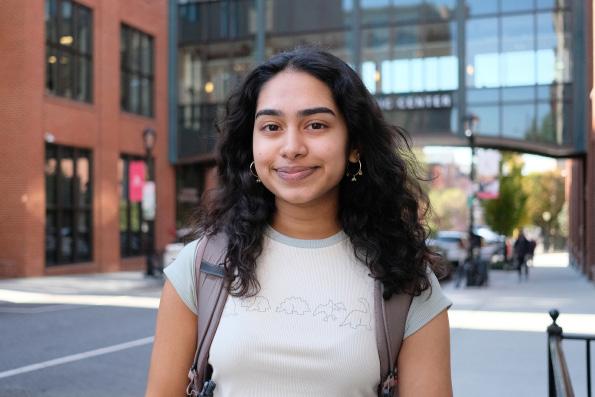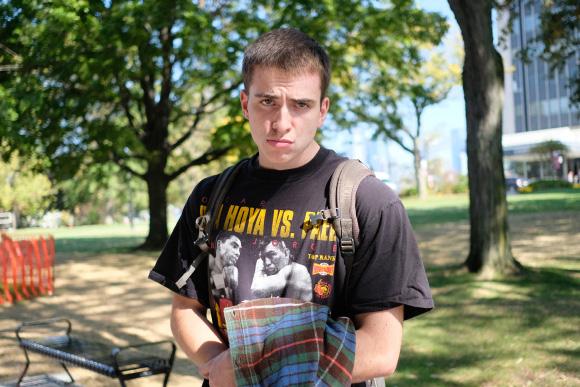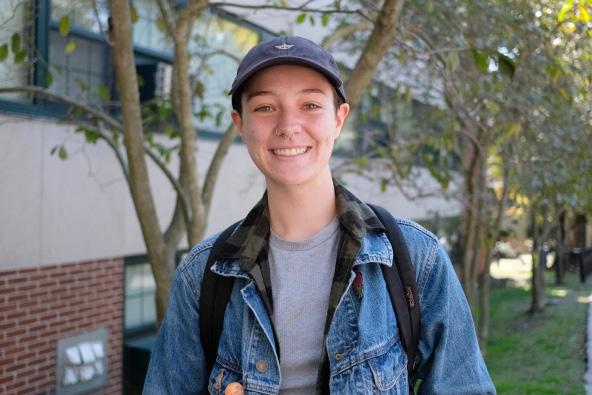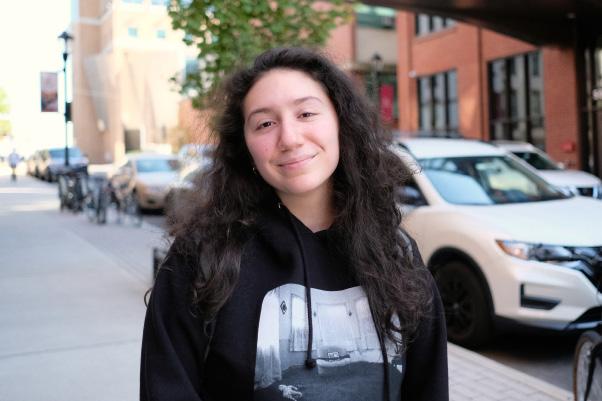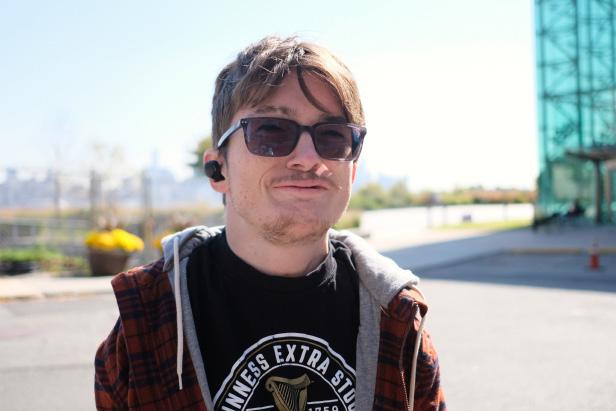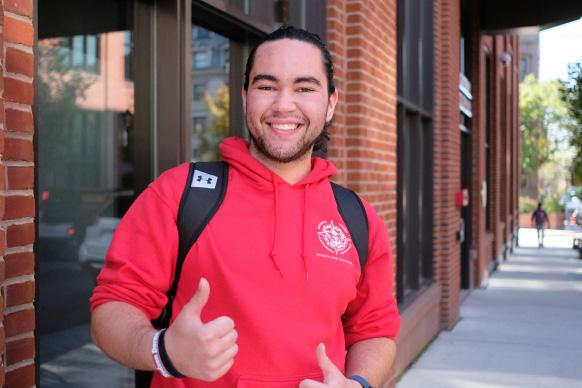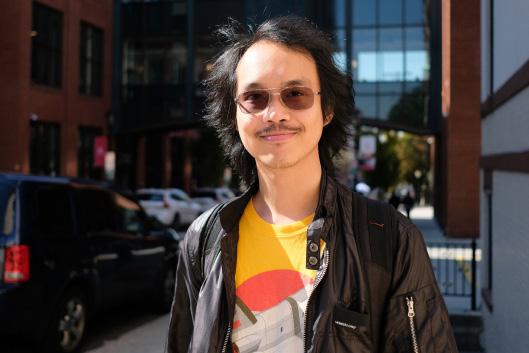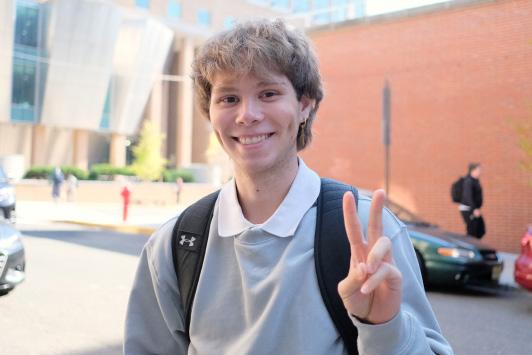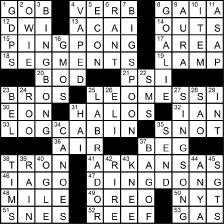DR. LIU AND DR. SUCHOW APPOINTED AS PRESIDENTIAL FELLOWS
BY EVAN PAPAGEORGE, STAFF WRITERAt Stevens, one of the most prestigious honors a young professor can achieve is to be a Presidential Fel low. A Presidential Fellow recognizes a staf member at Stevens and the achieve ments of their research and potential contributions to the institution in the future. This year, President Far vardin and Provost Qu an nounced that Dr. Hang Liu, Assistant Professor of Elec trical and Computer Engi neering in the Charles V. Schaefer, Jr. School of En gineering and Science, and Dr. Jordan Suchow, Assis tant Professor in the School of Business, were appointed as Presidential Fellows.
Dr. Liu earned a B.E. in Software Engineering from Huazhong University of Sci ence & Technology in 2011 and went on to his Ph.D. from George Washington University in High-Perfor mance Computing in 2017. He started at Stevens in 2019, and his work focuses primarily on data science, machine learning, and cy bersecurity. In his time here at Stevens, Dr. Liu has received three National Science Foundation (NSF) Awards totaling over $1.1 million, including the NSF
CAREER award. Recently, he won the IEEE Computer Society Technical Commu nity on High-Performance Computing (IEEE CS TCH PC) Early Career Research ers Award for Excellence in High-Performance Com puting 2022. Dr. Liu also won the Stevens’ Early Ca reer Award for Research Ex cellence as a 2022 recipient.
Dr. Suchow earned his B.S. in Computer Science from Brandeis Universi ty in 2009, his Ph.D. from Harvard University for Cog nitive Psychology in 2014, and completed his postdoc at the University of South ern California, Berkeley. Dr. Suchow started at Ste vens in 2019, leading much research in artifcial intel ligence due to his back ground in cognitive studies and computer science. His work focuses on develop ing computational models regarding group and indi vidualistic thinking, learn ing, and decision-making. In a recent project funded by The Defense Advanced Research Projects Agency, Dr. Suchow developed tech nologies that help in exper imental and social science data at scaled levels. Since his time here at Stevens, he has been awarded a patent and has had articles pub lished or accepted by 18
Career Center Executive Director delineates outlook on career fairs
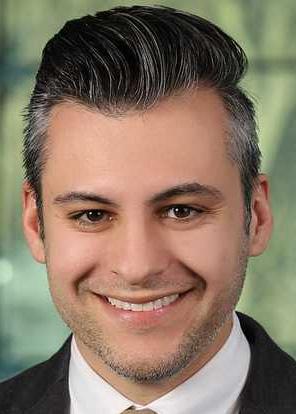 BY BENJAMIN KNOBLOCH, STAFF WRITER
BY BENJAMIN KNOBLOCH, STAFF WRITER
The Stevens Career Cen ter has shed more light on the challenges of running last month’s campus-wide Career Fair, as well as the University’s aspirations for making future fairs run smoothly and facilitating more interactions between students and employers. This information was ob tained via an email inter view by The Stute with Cherena Walker, Executive Director of the Stevens Ca reer Center.
Many Career Fair at tendees were frustrated by the multi-hour-long lines for the event’s venues, with many students who couldn’t attend in the morning due to classes ultimately not being admitted by closing time. Since each employer was stationed at only one of the two venues, attend ees likely would have had to wait in both lines to interact with all the employers on their lists. The Stute asked about venue selection and employer allocation, and whether problems were due to incorrect assumptions
about attendance numbers and space limitations.
“The challenges to this year’s Career Fair were generally due to space lim itations, increased student enrollment, and the pres ence of unregistered indi viduals both in line, and in some cases, at the Career Fair through the sharing of Stevens ID cards,” Walker wrote. As outlined in sev eral pre-Career Fair emails, attendees were supposed to enroll for the fair in ad vance through the Hand shake platform.
While high student de mand and a limited se lection of possible venues across campus are not new challenges, she explained, the scale of the demand as well as the low rate of prop er enrollment via Hand shake led to difculties with crowd management.
“By design, the registration process limits the number of employers and students consistent with our capacity to accommodate demand,” Walker wrote. She noted that the chosen venues were the largest available on campus and that employer

papers, most of which are high-impact publications.
Being a Presidential Fel low is a keystone moment in a professor’s career. According to Dr. Liu, “It means a great recognition to my group, as well as my teaching to our students and service to the univer sity and my community. It cheers my students up— they knew that their advi sor got this award, in part, because of their hard work.”
Beyond being recognized for outstanding work and research, the Presidential Fellowship also ofers a new perspective on the fu ture of their work. Dr. Liu explains that winning the award means, “I will have to stay closer to my inner peace such that I can think deeper and produce better research, teaching and ser vice.”
Being a Presidential Fellow is a great honor. Dr. Suchow and Dr. Liu received this recognition because of their incredible work and embodiment of Stevens. Being at the fore front of their felds, both re cipients are sure to continue their remarkable research to better Stevens and the greater society. For more information, please see the announcement from Presi dent Farvardin.
DR. HANG LIU ASSISTANT PROFESSOR OF ELECTRICAL AND COMPUTER ENGINEERING
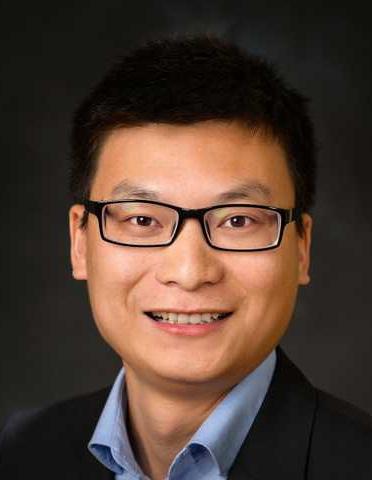
Class of 2026 largest ever for the School of Business
BY ADVAIT DANTULURI, CONTRIBUTORAccording to the stevens. edu webpage, the School of Business has welcomed its largest and most diverse class in school history, with 201 students enrolling this fall. As the article’s title also suggests, this incoming class is also one of its most diverse classes, with 40% of students being women, and 57 students also ath letes across multiple sports teams.
The Dean of the School of Business, Gregory Pratacos, credits the strong interest in business to “top faculty, up-to-date curriculum, ex
cellent student placements, and unique location of the university.” Pratacos states how the School of Business is “excited to welcome these new students to our campus, and [the school is] commit ted to educating and inspir ing the leaders of today’s technology-centric world.”
One student, Tanya Ava dia, chose to attend Stevens because of the unique pro grams that would set her apart from her peers, as well as the fact that graduates of Stevens experience one of the lowest gender gaps in pay. Avadia said, “The rea son why I chose Stevens, and specifcally the School
Quantitative social science major debuts
BY ANNA DABROWSKI, CONTRIBUTORAs of Fall 2022, the for mer Social Science major is being replaced by a newly developed major, Quantita tive Social Science, or QSS. Professor Kowal of the Com putational Social Science department defnes QSS as the “convergence of new in novations in data, compu tation, and statistics with a focus on how these tools can be better used to understand the broader society around us.”
In more simple terms, QSS combines data, pro gramming, and statistics with an understanding of how society works. Profes sor Kowal says that these skills are becoming highly sought after in the job mar ket as large companies, such as Meta, are looking for peo ple who can navigate the intersection of society and technology, to have enough technical skills to work with software engineers but also communicate with social sci entists. He hopes that in “5 years we will see our gradu ates working as researchers
DR.

IN
SCHOOL OF
Sigma Delta Tau growth week
BY NICOLE GIARDINO, STAFF WRITERThis past week, the Sig ma Delta Tau sorority host ed its annual Growth Week. Held every year in the fall semester, this week is de scribed as being dedicated to self-improvement, growth, and development. The Vice President, Elena Davis, ran the week of events, and said that “every year of events is diferent, but the week is always centered on becom ing a better version of one self.” She mentioned how at a school such as Stevens, it can be difcult to priori tize self-care since students are always busy with school and work, but this week provides the opportunity to take some time and remind oneself of the importance of self-development.
This year, they hosted fve separate events over the course of fve days, Monday through Friday. Kicking of Growth Week on Monday, October 3, was an event ti tled “Grow Your Impact.” This event is an all-day
SCIENCE (4)
Why whales get brain dam age when they swim. Can animals feel hurricanes?
Read to learn more about these topics and more
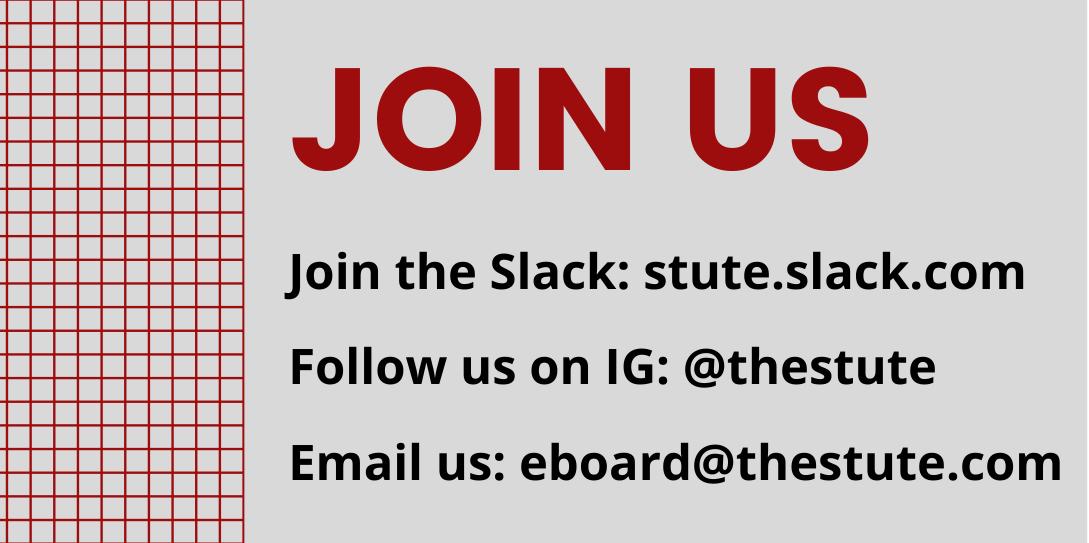
PULSE (10)
Read answers from the Stevens community to our weekly Roving Reporter, plus solve our weekly cross word

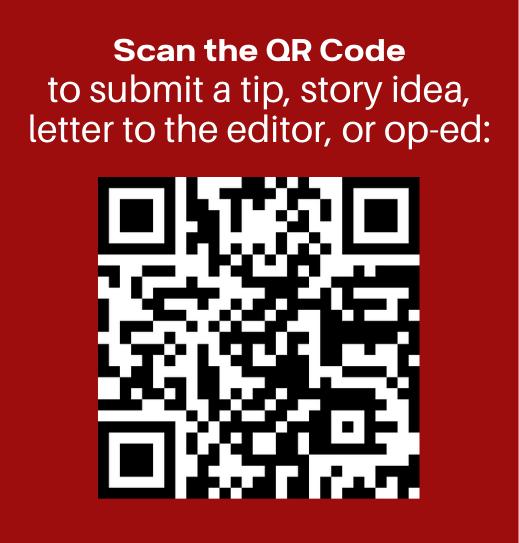
Executive Board
Editorial Board
Operations Board
Anna
Ben
Erin
Ethan
Evan
Josephina
Julia
NOTICE A MISTAKE?
in part,
written
reproduced
All members of the Stevens community are able to submit a Letter to the Editor to be published in The Stute. Letters must refer either to a piece published in The Stute or to The Stute in general and must be be tween 400 – 800 words in length. Submit letters to editor@thestute.com with your name and title (when applicable) or using our Google form. For writers who wish to write a Letter to the Editor anonymously, please see our policy on anonymity.
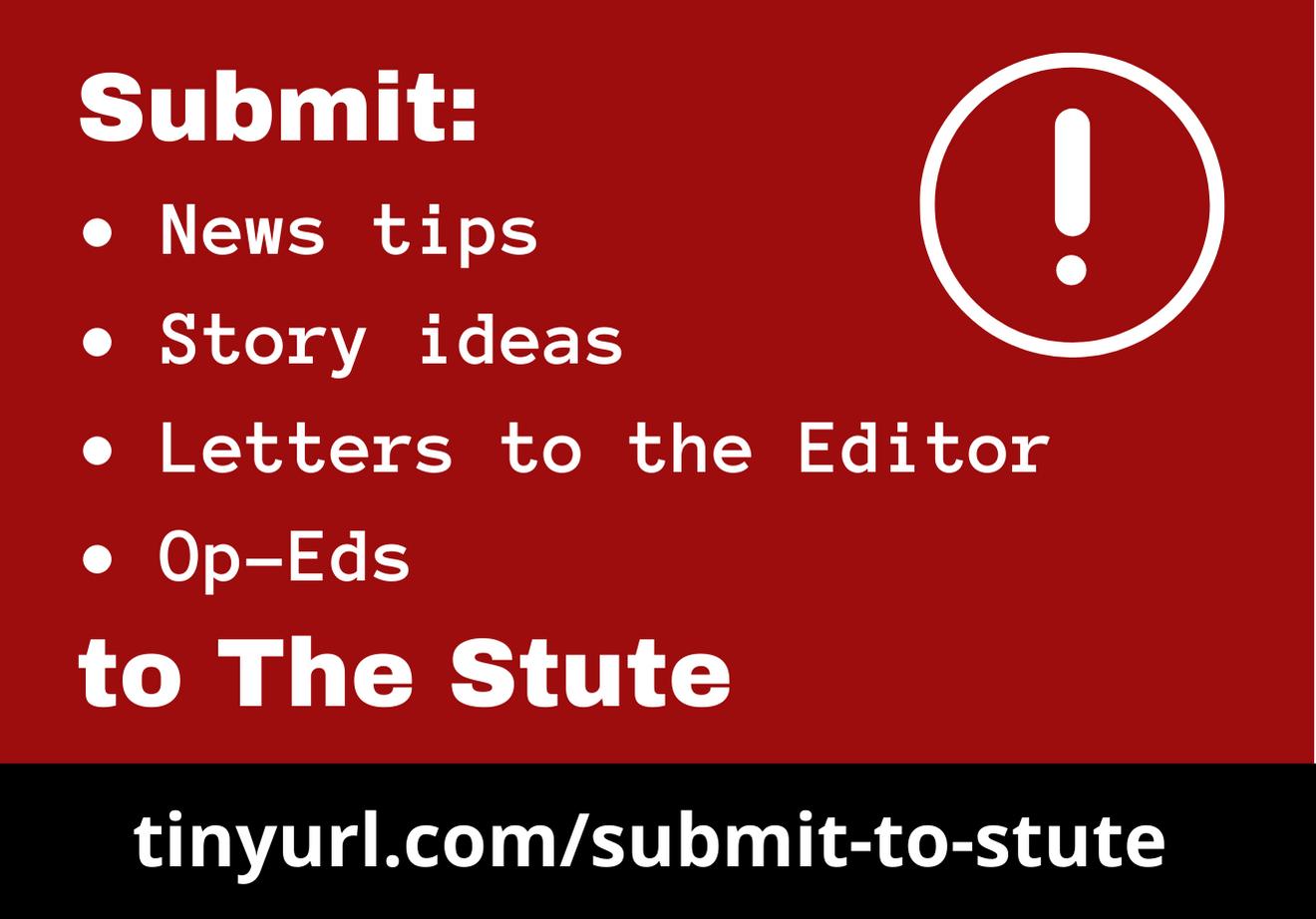
The Editorial Board reserves the right to choose whether or not to pub lish a submitted Letter to the Editor based on a majority rule vote, and additionally reserves the right to edit letters for clarity or request authors to revise. Provided that the author approves the fnal version, The Stute reserves the right to edit letters according to our copy editing procedures, defned in our policies.
Policy
All members of the Stevens community are able to submit a stand alone opinion piece (otherwise known as an Op-Ed) to be published in The Stute. Op-Eds must be between 400 – 800 words, but longer sub missions will be considered on a case-by-case basis. To submit an OpEd please email eboard@thestute.com with your name and title (when applicable) or using our Google form (tinyurl.com/submit-t0-stute). For writers who wish to write an Op-Ed anonymously, please see our policy on anonymity.
The Editorial Board reserves the right to choose whether or not to pub lish a submitted Op-Ed based on a majority rule vote, and additionally reserves the right to edit Op-Eds for clarity or request authors to revise.
that the author approves the fnal version, The Stute reserves the right to edit Op-Eds according to our copy editing procedures, de fned in our policies.
CAREER
allocation was necessary.
Beyond further encouraging and enforcing proper registration, Walker noted that the Career Cen ter is examining ways to alleviate the problem of demand outstrip ping the availability of space on campus. “Career Center staf are considering in-person fall fairs, with spring fairs held virtually on Handshake,” she wrote, which would help address the lack of space while also accommodating employers and students who pre fer to engage via video calls, virtu al conferences, and/or webinars.
She also highlighted the Career Center’s myriad initiatives that can serve as alternatives to largescale career fairs if students wish to meet with recruiters and learn
about employers. “[S]tudents are encouraged to take advantage of […] opportunities such as career chats, information sessions, in terview days, alumni panels, and more.”
According to the Stevens web page for recruiting events, ad ditional ofered opportunities include Alumni and Employ er-in-Residence programs, which allow students to meet one-onone with an industry veteran alumnus or employer, respective ly, for the purpose of building a connection or getting recruited.
The site also describes opportu nities like employer site visits and “Industry Insights” presentations.
“These events allow students to learn about companies, available jobs and internships, and provide opportunities to network with recruiters, 80% of whom are Ste vens alumni,” Walker wrote.
In light of students’ frustra
tion with the recent Career Fair, Walker announced that a new service, the Career Fair Resume Book, would be ofered, allowing students to add their resumes to a collection that would be sent to interested employers. When asked if this would become a reg ular service for Stevens students or Career Fair attendees, Walker said that the Career Center staf had not yet determined “whether a resume book will be available moving forward.”
Students who wish to fnd and interact with recruiters are advised to take advantage of the services described by Walker and listed on the Stevens webpage or to visit the Career Center in per son. Most importantly, for the convenience of all attendees of future in-person career fairs, re member to RSVP and register well in advance for Career Center events.
of Business, is because of their ROI–the high job placement rates, high starting salaries, high num ber of paid internships.” She also particularly likes how students are taught in a way that prepares them for the real world and that the pro gram allows her to combine her two passions: business and tech nology.
Avadia continued, “What I hope to gain as a School of Business stu dent is real world experience that I could apply to my job in the future and be able to network with pro fessionals in the industry I hope to work in.”
Akbar Pathan, another student, was initially planning to major in computer science but came to
Stevens when he learned about the quantitative fnancing major, which other colleges ofer only as a graduate program. As Pathan says, “To me, Stevens is more than ‘the school with the view.’ I see the val ue in my education. Quantitative Finance, a major not taught at the undergraduate level by the out standing majority of universities in America, is taught at Stevens, and it’s taught well. Whether it’s the incredible return on invest ment, opportunities, or culture, Stevens has it for me.”
Another student, Kevin Pfund stein, chose Stevens because “The curriculum is unique because it has been updated to match the needs of the modern business world. I felt the focus on technol ogy skills, data visualization and analysis tools will prepare me for the business world of today and tomorrow,” Pfundstein said. “The
as a huge draw for the program.
traditional accounting programs ofered at most colleges fail to give the technology-focused education that is ofered here at Stevens. I was also intrigued by the unique opportunity to minor in quantita tive fnance, which is a perfect ft for my interests. Stevens’ business curriculum allows me to turn my interests into marketable skills. As an added bonus my dorm view provides me with an inspiring view of the Hudson River and the Man hattan skyline.”
According to the article, the School of Business was recognized as a top-15 business school for eco nomic return by Georgetown Uni versity’s Center on Education and the Workforce. As President Nari man Farvardin elaborated, “Many of our business school graduates go on to long, successful careers in top-tier companies, re-confrming the value of a Stevens degree.”
and analysts at big companies like Facebook or Google, at high-pro fle agencies like the World Health Organization or CDC, or whatever it is they want to do.”
The old social science major is being retired, but students already enrolled in the program can choose to complete this degree. Incoming students will be eligible to major in Quantitative Social Science, and the department is actively recruit ing for next fall. Professor Kowal cites the fact that the degree is a Bachelor of Science, a major ad vantage in the current job market,
This new major was brought to fruition as a collaborative efort by the social science faculty, who came together to address the needs of the social science students. The faculty “realized that the curricu lum we had in the old major sim ply was not refective of the type of research that modern social science produces, which is heavily quantitative. We also realized that many of our students were not as well-prepared for the changes in the job market as we would like.” The new major was constructed from scratch and addresses all of the technological and quantitative requirements that were previously neglected.
A lot of student interest has
been expressed regarding the new major. QSS is a great ft for students who want to be exposed to the social sciences, while also addressing the problems in tech. Professor Kowal says that many students “don’t realize there are other options available to them that combine most of the pro gramming they are interested in, but with applications to the things they want to study.” He hopes that in a few years the QSS program at Stevens will be competitive with similar programs at high-profle schools. “Our unique curriculum, tech focus, and proximity to NYC and the network of jobs and in ternships available just over the river are a combination that truly is unrivaled.”
fundraiser which raised money for The Whole Spectrum Autism Foundation (WSA). This Foun dation is dedicated to providing awareness to all individuals on the Autism spectrum, and to ad ditionally provide aid and support to the families of Autistic indi viduals. Davis said, “Personally, I have always tried giving back and fnding diferent ways to help with increasing inclusivity for the neu ro diverse population, so I thought it would be good to raise money for this organization. We ended up raising $235, which was awe some!”
The following day, Tuesday, they hosted a workshop entitled “Grow Your Dough,” which was fo cused on giving tips and tricks on how students can save money af ter college. Stevens Alumni spoke at this event and gave the group advice on how to save money and also pay of loans after graduating, which is information that is ben efcial for college students to be hearing about from people who have already experienced it.
On Wednesday, they hosted “Succulents with Sig Delt,” which is an event where students can plant and decorate a succulent for $4. Davis claims that this is the most popular event that they hold and that they typically host this event every year because of the large crowds that gather for it. Students plant their succulents and then are permitted to paint the pot the succulent is in how

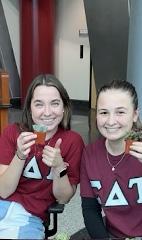
ever they may please. All of the proceeds from this event went to City Green, a sustainability orga nization that is focused on doing comprehensive research and de velopment to explore challenges, causes of failure, and the reasons for urban trees dying prematurely in city environments.
On Thursday they hosted a self-defense class, “Grow Your Self Defense Training,” where stu dents learned how they can be safe and defend themselves in times of danger. The sisters of Sigma Delta Tau joined alongside the members of Stevens’ own Martial Arts Club to create this event. With a large uprising of crime in the Hoboken and Jersey City areas, this class was very benefcial for students to attend.
Finally, on Friday, October 7, Sigma Delta Tau’s Growth Week ended with a yoga class, “Grow Your Mind, Body, and Soul.” Host ed by Karen Shaddock, the Wom en’s Lacrosse Coach, students were guided through Yoga in the Schaefer Athletic Center alongside the sisters of Sig Delt.
Overall, this week was flled with growth, inspiration, and fun. This week accomplished having students relax and focus on their mental health.
Prioritizing stay ing happy and healthy is vital to having a successful college career, and that is why Sig Delt’s Growth Week is so valued within the Ste vens Community.
You can follow them for more information on their organization and any information on upcoming and future events on Instagram:
Sports
Men’s and women’s cross country at the Purple Valley Classic
BY EVAN PAPAGEORGE, STAFF WRITEROn October 1, the men’s and women’s cross country teams com peted in the Purple Valley Classic which was held in Williamstown, MA, and hosted by Williams Col lege. The race was a six-kilometer course for the women, the frst of this season, and eight kilometers for the men. Additionally, this marks the Ducks’ frst appearance at the Purple Valley Classic since 2015. The men’s team fnished in fourth place, and the women’s team fnished in 10th place.
In particular, the Stevens ath letes that stood out from the wom en’s team included junior Rachel Pinho, who led with a 6:49.2 mile pace for a six-kilometer time of 25:25.9, falling just over three minutes behind the lead runner, Mary Kate McGranahan from Am herst. Junior Fionna Feerick fn ished behind Pinho with a 26:38, and the third Stevens fnisher was frst-year Taylor Enes, in her frst collegiate 6-kilometer event with a 27:07. Graduate student Caroline Corr had a 27:28.6, and sopho more Samantha Rozek’s 27:38.3 ended the women’s roster for Ste vens.
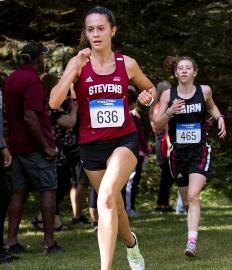
On the men’s side, three Ducks fnished inside the top 25 fnishers of the race. Junior Jake Aylmer was the frst Duck to cross the fn ish line, with a 5:21.4 mile pace to fnish with a 26:33.6, the sec
ond-best of his career. Following Aylmer was Senior Ronnie Melao coming in second for the Ducks, with a 5:24.9 mile pace to com plete the course at a fnal time of 26:55.1, which is his second-best time for this event. Junior Liam Concannon was the third Duck to fnish among the top 25 runners with a 5:25.4 mile pace and fnish ing at 26:57.6.
Men’s and women’s cross coun try head coach John Kolibab of fered some encouraging remarks to his team. He commended the team on great performances on a course harder than typical for Ste vens. Regarding the leaders in the men’s race, Kolibab stated, “The trio of Jake Aylmer, Ronnie Melao, and Liam Concannon were spec tacular today: all three went under 27 minutes, which speaks volumes to their potential. Our men did not look out of place in the slightest against some very talented com petition and competing well today will only boost their confdence heading into the back half of the season.”
Kolibab mirrored similar sen timents for the performance of the women’s team at the event. He commended the team for “going out and competing” and for their exceptional performance on their frst six-kilometer race of the sea son on a challenging course. Koli bab concluded his remarks by stat ing, “while the times weren’t close to where they’ll be over the rest of the season, I’m happy with how
Updates on Stevens feld hockey
BY RUTHIE MULLISK, CONTRIBUTOROn Wednesday, September 28, the Stevens feld hockey team trav eled to Sprague Field in a non-con ference matchup with Montclair State University.
In their game against Montclair State, they fought a tough battle that went all the way through to overtime play. The Ducks were frst to put a goal on the board during the second quarter; Sophomore Sarah Korczukowski scored after receiving a pass from frst-year Elizabeth Sullivan. This marks the second goal of Korczkowsk’s colle giate career. Montclair scored in the fourth quarter, but the Ducks were able to hold of four shots, each from penalty corners, to force overtime.
During the overtime peri od, Montclair’s Carlie Van Tassel broke into the scoring area, where Stevens’ goalkeeper ffth-year Em ily Franco attempted to block her shot. In doing so, the two players collided and Montclair was award ed a penalty stroke, where Mont clair scored the game-winning goal.
In circumstances such as these where the game is decid ed by uncontrollable events, it’s important to look at the game as a whole. Head Coach Meredith Spencer-Blaetz commented on the game saying, “Incredibly hardfought game tonight. It’s frustrat
ing when uncontrollable moments afect the outcome, but I am proud of the way that we played and the way that we connected. Each day is a learning opportunity and we are ready to step back into confer ence play this weekend even better than before.”
Three days later, the team trav eled to Misericordia University in Dallas, PA to play in a conference game. During the frst quarter, the Cougars scored frst only six min utes into the game. However, the Ducks kept the pressure during the second and third quarters as they outshot Misericordia 5 to 3 and 4 to 2 respectively. This pressure eventually paid of as the Ducks scored twice in the fourth quarter. Only three minutes into the fourth quarter, sophomore Makenna Quigley tied the game after scor ing from an assist by junior Pauli na Georgoutsos. With just over fve minutes remaining, junior Julia Zatyko scored the game-winning goal assisted by sophomore Emily Smart.This match brings the team to a conference record of 2-1 and an overall record of 6-5.
The feld hockey team has com peted in two more matches, which were a 1-2 loss against Keystone College on October 5 and a sweep ing 6-0 victory against Wilkes University on October 8. Their next match will be an away game on Saturday, October 15 against Eastern University.
our women attacked the course today. You can expect big improve ment from them over the next cou ple of meets, and I’m excited to see how they perform on some more runner-friendly courses.”
sity Invitational in Pennsylvania, where the men took 10th of 20 and the women placed 9th of 19. The next meet for men’s and women’s cross country is the Connecticut College invitational taking place tomorrow, October 15 at 11 a.m. in New London, CT.
SAT, OCT 15
MEN’S GOLF
The Melee–Round 1 Easton, PA Time TBD
FIELD HOCKEY vs Eastern University St. Davids, PA 11 a.m.
WOMEN’S CROSS COUNTRY
Connecticut College Invitational New London, CT 11 a.m.
MEN’S CROSS COUNTRY
Connecticut College Invitational New London, CT 11 a.m.
WOMEN’S SOCCER vs Lycoming College Williamsport, PA 12 p.m.
MEN’S SOCCER vs Lycoming College Williamsport, PA 3 p.m.
SUN, OCT 16
MEN’S GOLF
The Melee–Round 2 Easton, PA Time TBD
TUE, OCT 18
WOMEN’S VOLLEYBALL vs DeSales University Center Valley, PA 3:30 p.m.
WED, OCT 19
MEN’S SOCCER vs DeSales University Center Valley, PA 3 p.m.
FIELD HOCKEY vs Arcadia University Glenside, PA 7 p.m.
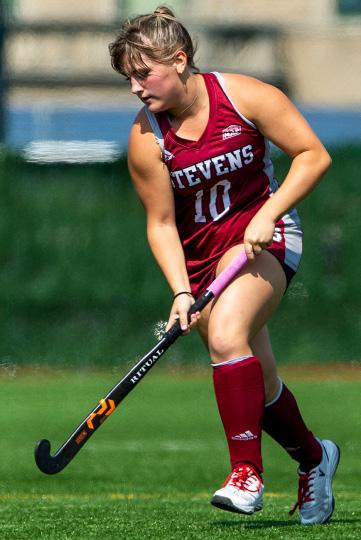
WOMEN’S VOLLEYBALL vs Lycoming College Williamsport, PA 7 p.m.
STEVENS SCOREBOARD
FDU-FLORHAM
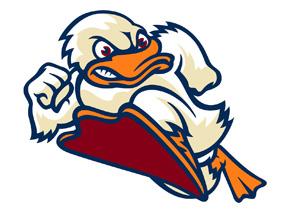
FIELD
WOMEN'S
MEN'S
MEN'S
FIELD
WOMEN'S
WOMEN'S VOLLEYBALL
WOMEN'S SOCCER
WOMEN'S
Can animals feel hurricanes? Florida animals’ response to Hurricane
BY EVAN PAPAGEORGE, STAFF WRITEROver the past few weeks, Hur ricane Ian was one of the high light news stories across the country. However, before the mass exodus of evacuees and purchasing sandbags and emer gency supplies, marine animals and other wildlife were long gone, escaping the onslaught of heavy currents and wind. This raises the question of how ani mals know in advance when and where a storm will be. Although the easy answer is “they evolved to know,” there are scientific methods animals use to avoid storms. Additionally, there are other behaviors, more unexpect ed, of animals in hurricanes.
However, the growing threats of climate change are endangering these age-old processes.
While most people learn of storms through television or phones, animals do not have that luxury (probably).
Instead, sharks, manatees, and even alli gators and crocodiles use many of their unique skills and talents to evade hurricanes. The storms themselves have many notable characteristics that animals use to observe the whereabouts of a storm. In the atmosphere, the barometric pressure drops sig nificantly as the cyclone intakes a lot of air from the surrounding areas. One animal, in particular, that is well-equipped to predict the path of a storm is the shark. Sharks have sensitive inner ears
which sense the change in pres sure with great ease. Because of this, some small species of sharks would be in danger be cause the violent currents up to 300 feet below the surface could easily overpower the animal and hurt them.
However, while some smaller sharks scatter for safe waters, some larger species, like the tiger shark, seem to follow the storm. A study done during Hurricane Irma tracked tiger sharks and noted that they stayed with the hurricane. Scientists speculated that predators tend to stay with a storm because they can with stand the currents and dangers while taking advantage of prey that may be injured or killed by the storm. The study found that
the population of sharks in the study area remained high for two weeks after the storm.
Besides the tiger sharks, many other animals do not have the speed, size, or agility to avoid or follow the storm. These ani mals, the sea snakes, alligators, frogs, and manatees, attempt to find shelter from dangerous con ditions. Some, like snakes, hide in volcanic rocks, and others, like alligators, find easily acces sible nooks in the rocks. Howev er, if an individual animal does not get to a secure location, it can end up stuck in a potentially dangerous situation. For exam ple, some manatees find their way into ponds, forests, or even flooded streets.
Despite these possible dan
gers, global warming is proving more dangerous than any indi vidual hurricane. As sea tem perature levels increase, the number and intensity of storms will become more destructive. The instincts of sharks, mana tees, and other animals will not evolve fast enough to protect them from the dangers of hurri canes. Despite the extraordinary powers these animals have, the rapid changes due to the hu man-caused climate change will significantly diminish the abili ty of animals to adapt to defend themselves from storms.
For more information about animals in hurricanes, see this article from Popular Science magazine.
Self-driving cars causing trafc jams in San Francisco
 BY TANYA AVADIA, CONTRIBUTOR
BY TANYA AVADIA, CONTRIBUTOR
With the current advance ments in automotive technol ogy, it is clear that the era of self-driving cars is approaching. Many companies such as Gen eral Motors and Alphabet are working towards perfecting their self-driving cars before potential ly launching them into the mar ket. The state of California’s Pub lic Utilities Commission (CPUC) awarded both General Motors and Alphabet permits that allow them to use their self-driving ve hicles for passenger service back in February 2022. Since then, General Motors’ Cruise and Al phabet’s Waymo have had per mission to collect fares from pas sengers and offer shared rides. However, it appears that the technology behind self-driving cars still needs to be tweaked as several incidents have occurred in which self-driving cars caused inconvenient traffic jams in San Francisco.
While traffic jams aren’t a new phenomenon, the efficiency behind a self-driving car should be made so that they do not add to the traffic blockage. Unfortu nately, General Motors’ subsidi ary Cruise has had a lot of vehi cles that have become the root cause of recent traffic jams in San Francisco. Two of Cruise’s Chevrolet Bolts were seen block ing traffic near the intersection
of Sacramento and Leavenworth streets. Both cars were reported to have their hazard lights on but it was unclear whether both cars were having issues or if the sec ond car stopped because the first one was hindering its passage. In recorded footage of this blockage, a voice can be heard that states, “there’s no driver!” followed by frustrations from many of the other drivers.
Another similar incident took place at Franklin Street and Geary Boulevard. A Cruise unit entered the bus lane and ended up only inches away from a colli sion with the San Francisco Muni bus. Later a strange trail of liq uid was discovered coming from underneath the Cruise vehicle. It still remains unknown what the liquid was or where it came from.
The third occasion of self-driv ing cars causing trouble was when another Crusie car blocked Sacramento street near Mason street. This was spotted by an chor Dan Thorn of KRON4 who shared the video on Twitter. In the video, the car is seen blasting music even though no one is in side. This caused a lot of commo tion which wasn’t resolved until a team from the Cruise came to check out the issue at the request of Thorn who had called the as sistance number displayed on the vehicle. The need for this kind of request raised many questions as to why the company was not in formed about their car’s blockage
and need for assistance earlier.
A Cruise spokesperson, Drew Pusateri, reported that the cars were stopping due to a technical error. He continued by stating, “if our cars encounter a situation where they aren’t able to safely proceed, they stop and turn on their hazard lights, and we either get them operating again or pick them up as quickly as possible.”
Pusateri also mentioned how each traffic jam was resolved as a
Cruise team came within 20 min utes to collect the vehicle. While it is a very good thing no colli sions happened, it is evident that Cruise’s vehicles still need work.
These incidents show that self-driving cars still require many improvements. While it is fortunate that no accidents took place, it is still a possibil ity with the current stage of the technology. Additionally, the in convenience of the traffic jams
Why whales don’t get brain damage when they swim
BY ERIN MCGEE, SCIENCE WRITERResearching Earth’s larg est animal is not for the faint of heart. Whales, and in partic ular their biological systems, have been essentially inaccessi ble for scientists to study thus far, due not only to their size, but their habitat as well. These roadblocks, however, have not stopped researchers from find ing innovative and ethical ways to learn more about these crea tures. One such group at the University of British Colum bia has recently used computer models to model how a whale’s circulatory system works while swimming.
To understand how such large mammals are able to swim with out breathing for a prolonged period of time, we first need to
look at blood flow. Mammals ex perience changes in their blood pressure that enables their blood to be pumped throughout their body. A difference in pressure on one side causes blood to move to the other, and vice versa. Blood pressure is often higher for oxy genated blood that is exiting the heart, or the arteries than it is for blood that is about to enter the heart or veins. This process of blood flow usually works per fectly, until it is interrupted by an animal exerting itself. Sud den movement or exertion, sim ply referred to by the authors of the papers as ‘locomotion,’ can cause spikes in blood pressure. These spikes, termed ‘pulses,’ can cause brain damage as blood moves through the brain, as they can cause a difference between the pressure of blood entering the brain to the blood leaving.
These damages are often longterm and can include dementia.
Mammals have found differ ent ways of dealing with these pulses. For example, horses can negate the effects of brain dam age by breathing in and out, tak ing one breath per stride to syn chronize their movement with their blood pulses. This is known as the Windkessel effect, and it requires the animals to actually dampen the pulses in the blood. Whales, however, do not have this luxury, as they hold their breath while swimming. So this is the mystery that has evaded scientists for so long: how do whales avoid this brain damage when they swim?
The answer lies in a whale’s “retia mirabilia” or its “wonder ful net,” a term that refers to the network of blood vessels that surrounds a whale’s brain. Pre
viously, the use of this structure was unknown, but researchers theorized that it had to do with the question of avoiding brain damage.
To test this theory, they col lected circulation and swimming data from 11 different species of whales, porpoises, and dolphins, all of which are mammals that have retia mirabilia. Then, they modeled different explanations for how whales are able to de crease the blood pulses and test ed each hypothesis for its likeli hood of being true.
What they found was that it is most likely that whales use a “pulse transfer” mechanism in order to avoid brain damage from the difference in pressure. This means that instead of sim ply dampening the pulses, the retia transfers the pulse that is entering the brain to the blood
caused by these cars cannot be overlooked, especially given how the car did not have the built-in software to figure out what to do or a remote team to give it in structions. The technology of the self-driving car is still lacking in many ways but one day soon, the improvements from these inci dents will actualize self-driving cars on the road for everyone to use.
that is exiting. This keeps the same strength of the pulse that is entering and exiting the brain, therefore avoiding any pressure or damage to it.
The researchers note that their model and process could potentially be used to research other animals, to potentially explain how they deal with this circulatory problem. The univer sity also points out that the next step to confirming this would be to get real-world circulation data from a whale to test this against, which for practical and ethical purposes, is completely impossible. That being said, the team still plans on using their computer model to research their theory further, citing how invaluable simulations are when researching such biologically complex creatures.
Pick up a copy of The Stute!

Opinion
Why we should all be more like Taylor Swift
You know, I wasn’t always a Swiftie. Although I hate to ad mit it, younger Sanjana would stick her nose up and roll her eyes when she heard “Love Sto ry” or “We Are Never Ever Get ting Back Together.” My younger self was repelled by what seem ingly sounded like another main stream pop song presenting the trials and tribulations of love. It wasn’t until I started college that I fully understood the extent of Swift’s music. I’ve realized the true meaning of her songs follow the adversities of being a woman in today’s society, and moreover, how to deal with these adversi ties. Additionally, I’ve realized there’s much to learn from her discography, and that it would beneft us all to be more like Swift.
Popular female artists often have the strongest fan bases. But despite this, they also face the most scrutiny from the media. Every walk, smile, speech, ges ture, and slip-up is probed, sift ed, dissected, analyzed, by pop culture news outlets and some times, larger media platforms
On fashion
as well. It’s hard to speculate if Swift’s career would’ve been easier if she was “The Man,” but judging by the fact that male art ists aren’t as frequently blasted by the media, signs point to yes. Even in the face of adversity, Tay lor has managed to have an overly successful career, and this can be largely attributed to her actions and how she’s built her empire.
Perhaps the most admirable thing about Taylor is her seeming carelessness towards the hate, and how she “tolerate(s) it.” My personal favorite thing about her is that she primarily responds to media politics through her mu sic. Her album reputation is a prime example of responding to the negative press surrounding her stature and prestige. Other songs like “You Need To Calm Down” and “Shake it Of” are also responses to the unfavorable ru mors surrounding her and oth ers’ personal lives.
Taylor is also a role model for people-pleasers, especially those who weigh and value the opinions of other people before their own. Feeding into the words of oth
ers can often feel like a “Death By A Thousand Cuts.” Taylor’s music has shown that when you fall into the trap of needing to please other people, you lose the best and most important parts of yourself. Soon, “long story short,” you won’t be able to recognize the person looking back at you in the mirror.
Finally, Swift has worked to develop one of the most integral foundations for success: a strong support network of friends and family. Taylor’s strong band of friends have continued to sup port her through what might’ve been her toughest times. Build ing a web allows us to know that even during our worst moments, we’ll have people who will de fend us. So it shows, sometimes “It’s Nice To Have A Friend” and people who will always “Stay Stay Stay.”
Swift has shown that she un derstands our struggles in “All Too Well” (the 10 minute version, of course), which is why I be lieve her life lends us many les sons to learn. Some takeaways: (1) Respond to criticism through
creative outlets and action, not by reacting rashly; (2) Let them
“Call It What [They] Want” after you’ve done right by yourself; (3) Understand your biggest faws, and come to “peace” with them; (4) Know that you’re a “mirror ball” and show every version of yourself. Swift is a prime example showing that being idiosyncratic and unapologetically yourself in a world that prefers conformity can lead to “happiness.”
For the reasons stated above, I listen to Taylor Swift every day, and I don’t envision a world in which I intend to stop. In fact, I’ve been listening to her music while writing the entirety of this column, and it’s been somewhat of a spiritual experience. While I don’t love every one of her songs, her lyrical compositions resonate with me in a way that many oth er artists’ songs can’t. Even when she’s been depicted negatively by the media, oftentimes as a “mad woman,” she continues to pro duce new music that’s enjoyed by millions globally.
Let’s all be more like Taylor. “Long Live” Miss Americana.
What’s the story with exams?
BY MOHIN PATEL ‘26
Walking into school was never an easy task, and do ing it knowing my parents had dressed me from the bottoms of my feet to the top of my head made it even harder. They took time and care to curate my curious ensemble of clothes, coming anywhere from Lacoste to Costco. Granted, I had a say in the matter, but the prob lem was that I never cared for fashion in general, so I would thoughtlessly accept the choices they made for me.
I would frequently fnd myself overdressed for ev ery single one of my classes all the way up to junior high, and I decided there’s no bet ter time than the present to change my ways. I broke away from the guidance of my parents, but as someone with no experience express ing themselves through clothing I ended up with the worst combinations imagin
able. I mixed a white dress shirt with neon green Nike shorts, a pink Vineyard Vines hoodie with bright blue corduroy dress pants, the possibilities were unfor tunately endless. It came as a surprise to me when my friends would often voice their concerns, telling me how poor my decision mak ing skills were every morn ing when I would determine the next bizarre combina tion that the world was not ready for.
Eventually, I learned that I can’t quite express myself through my clothes because they were never my clothes to begin with. They were residual—relics of a time long past. There was only one thing left to do: buy my own clothes. That was easier said than done for a teen in high school with no money or idea of what to buy, so I did the frst thing anyone does to answer an undying question.
The Google search bar read “How to get good style with no money” and I knew the second that I pressed enter that my life would f nally change for the better. I was confronted with a del uge of articles mostly saying the same thing: telling me to buy second hand cloth ing and to pay attention to proportion, size, silhouette,
color, and more. My eyes were fnally open, and I was seeing far beyond the nar row horizons of my previous closet.
I drove with a few friends to the closest undisclosed thrift store and was awe struck by the sheer amount of promise there was hidden within those walls. I ended up splurging the entire 20 dollars I brought as a bud get, but considering that my clothes were all 89 cents a pound I saw this as an un equivocal win. With a few similar trips I lined my clos et with clothes that I could fnally create adequate out fts with, slowly but surely trial-and-erroring my way to express myself through clothing.
Even at Stevens, I fnd myself experimenting with every outft and changing it at least twice before de ciding on my fnal ft for the day. By no means does this indicate that I am dressing in something groundbreak ing every time I leave my room, but it just means that I am wearing what would make me the most happy. This may be a waste of time for some, but this custom has led me to enjoy far more out of every day, thrilled for every opportunity to look like the best version of my self.
An adventure in Pennsylvania
BY OFF CENTER
Of the Press took a road trip to Scranton, Pennsyl vania last weekend because we are big fans of The Of fce, Lackawanna County, and all other things north east Pennsylvania. On Sun day, we went to the local high school where it seemed like a lot of people were lin ing up for the start of some kind of race. We had taken a coach bus to get there and it took like 40 minutes, but in a couple of interviews we had with people, it seemed like everyone intended to run all the way back to where the bus had come from. This was a crisis be cause it meant we were 26.2 miles away from where we started and there was no bus back. While most of
our editors and reporters decided to see if there was an Uber or something, our head editor decided to stick around and see what was up. After all, it’s not like ev eryone was going to run all the way back, right?
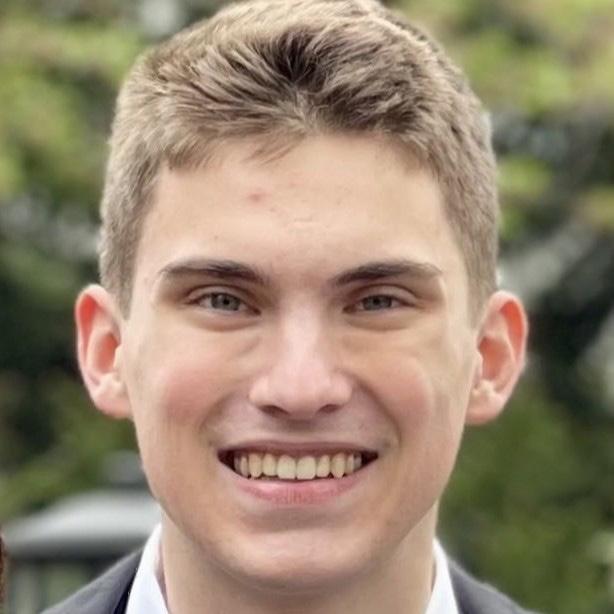

At frst, it seemed like a great idea—it was a little chilly, but they had cheer leaders at the start being all supportive, there were people handing out water bottles, and an astonishing number of porta potties for what seemed like around 500 people. Someone sang the national anthem and then everyone just started running. It didn’t seem like anyone was scared, in fact, everyone except our editor seemed to be expecting to just start running in a di rection. I kept asking peo
ple where we were all going, but no one really seemed to want to talk.
After several miles of running, an excessive and unacceptable amount of running we would say, we came to some fans who seemed to be expecting us. This was truly unexpected as until then it had just been a horde of people running along a road where there should be cars, but because it was 8 a.m. on a Sunday there were none. More sur prisingly, they were giving out cups of water and Ga torade. Everything seemed to be indicating that more running was to be expected and a sense of foreboding grew. Also, Gatorade total ly went up my nose when I tried to drink it while run ning.
BY TREVOR DAMEIKA ‘23The most anxiety-induc ing word at Stevens is “test” or “exam.” The speaking of either of these words means that there is a countdown clock for you to be prepared enough to spew whatever amount of knowledge you have onto paper. Although you may have to deal with the fact that sometimes this knowledge that you ab sorbed leading up to it is not good enough, you have to note that that exam was and will never be the be-all and end-all.
When frst arriving at Stevens, many students experience the “freshmen quiz period” as a way cer tain courses welcome them. Courses, such as MA 121124 or CH 115, teach the dis cipline of having an exam only at 5 p.m. on a specifed day. This can throw of your weekly schedule and worsen your preparation, as it oc
curs when you normally do not have anything going on.
If a test, like this fresh man quiz, is coming your way, the best way to prepare is to be able to locate those times in your week when you have that studying free time. Lots of your schedule can be disrupted, or you may be the type of person to wait until the last minute to study. For example, I cannot study for an exam one to two weeks ahead of time, since I will not be able to recall the majority of the information.
Additionally, I need that “last minute” mentality to get me best prepared. This mentality tells you that you must complete your study ing now or you will fail, fall short, or disappoint your self as the time to the exam winds down.
Other than preparing for an exam, taking the exam itself is a completely difer ent story. For much of my college career, I never did well on the frst exam of any given course. No matter how many people said how easy the exam was or how much preparation I did, it just never worked out. I always tended to adapt and bring it all together for the following exams.
I have gotten my fair share of feeling confdent after each exam, and anoth
er student would come up to me telling me they got a dif ferent answer for multiple questions. I would spend the next few hours wondering if I actually did mess up that much and what that would mean for my grade. The best thing to do is to leave what you did on that test in the exam room. Walk away and do not bring up the test with your friends in the course to save yourself from more test anxiety.
When you do learn your grade, the best thing to do is go to the professor after ward and have them talk with you about what you did wrong. It may be difcult to come face-to-face with someone who may have just handed you your worst grade ever, but it also shows the teachers where they need to improve.
Throughout your col lege career, you may run into professors that are ex tremely frustrating and are not helpful to improve your course grades. It’s their job to teach you the materi al, but it is also your job to make time for them and their material. Midterms are approaching, some may be projects, some will be ex ams. Just keep your head up and know that there are a lot of grades still to make up for possible mistakes.
It became clear that the only way out was to keep going forward. As oth er people alongside me dropped to the ground, began crawling, and were carted of on stretchers, I persevered. Even after what felt like an injury to the hip fexor brought on by hyper lordosis. The Rocky theme began to play on an absurd amount of speakers from nearby houses, although some of those may have been imagined due to the state of delirium. The fam ing chariots also may have been imagined now that I think about it.
After 3 hours, 19 min utes, and 57 seconds and to a standing ovation from hundreds of people I did not know, I crossed what could only be described as a
trapezoidal pad with a clock above it that seemed to be the end of the event. Some one gave me a cool-looking medal with a train on it and other people got danger ously close to shoving mac and cheese directly into my face.
It was at this point I f nally caught up with the writers who had come on the road trip with me.
“Dude we’ve been look ing for you for 3 hours, 19 minutes, and 57 seconds, where were you?”
“You ran all the way back? It was like a 40 min ute drive.”
“Are you gonna eat that slice of pizza?”
I think I need a new team of writers, but if this line makes it in, they were cool with me saying that.
Biden’s talks of nuclear armageddon
BY TASHA KHOLSA ‘25Introduction
Following Ukraine’s recent successes on the battlefeld in the war against Russia, Rus sian President Vladimir Putin has suggested that the war could escalate to nuclear con fict, vowing to “us[e] all our forces and means at our dispos al.” In response, President Joe Biden declared that “We have not faced the prospect of Arma geddon since Kennedy and the Cuban Missile Crisis.”
Campus Conservative, Marisa Powers

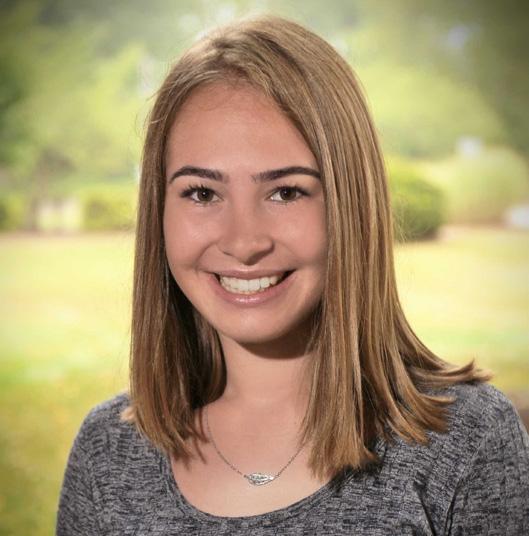
According to Robert Gates, former President Obama’s Sec retary of Defense, Biden has been “wrong on nearly every major foreign policy and na tional security issue over the past four decades.” While this comment was made in refer ence to Biden’s opposition to “every one of Ronald Reagan’s military programs to contest the Soviet Union,” the frst Gulf War, and even his withdraw al from Afghanistan in 2021, I would argue it could also be applied to his recent statement about the risk of Armageddon being at its highest level since the Cuban Missile Crisis.
In my view, Biden’s state ment is nothing but fear-mon gering and not based on intel, as pointed out by Press Secre
BY MARISA POWERS ‘23tary Karine Jean-Pierre this past Friday when she said the U.S. “has not seen any reason to adjust our own strategic nu clear posture nor do we have indications that Russia is pre paring to imminently use nu clear weapons.” Biden also said in the same speech, “We’ve got a guy I know fairly well,” again showing that his Armageddon comment was not based on intel but on Biden’s character ization of Putin. This demon strates recklessness in a situa tion where the exact opposite is needed.
While I do acknowledge that Putin is dangerous, there are better ways to respond to him than insinuating Arma geddon. The United States should be putting pressure on Russia and should have back in January when Putin was frst threatening to invade Ukraine. Biden’s comments display his poor judgment in foreign af fairs and create more issues than solutions.
Campus Liberal, Tasha Khosla

The war between Ukraine and Russia has escalated, and it is understandable that the threat of nuclear attack is not one that should be taken light ly. However, Biden’s comments, while meant to ignite caution,
do not have enough concrete evidence to support them. Historically, Biden has been known to “push against the margins of U.S. policy.” In the past, he has called Putin a “war criminal” despite the fact that this is a term that the White House avoids using because it requires results from investi gations that are still ongoing, making those remarks prema ture. U.S. Department of State ofcial Ned Price had even said back in March, “What we are doing here at the State Depart ment, we are collecting every single piece of information, we’re evaluating it, we’re docu menting it and sharing it with our partners. There is a process that is involved in this.”
Biden’s use of heavily charged terms such as “Arma geddon” and “Cuban Missile Crisis” once again seems pre mature, especially since these remarks are not based on intel and “The US still has seen no evidence that Putin is moving toward using Russia’s nuclear capability, nor is there any intel ligence showing he’s decided to do so.” Evidently, Biden’s state ments are only serving to incite fear without a concrete reason.
Yes, President Putin’s threats should be taken seri ously, however, calling the sit uation an “Armageddon” does not refect well on the nation. Rather than making baseless comments, the Biden Admin istration needs to take stronger action against Russia.
Conclusion
Both sides agree that Biden’s statements only serve to provoke fear without solid evi dence and that the Biden Ad ministration needs to put more pressure on Russia—now more than ever.
FOR MATH’S SAKEPendulum painting: a capriole with chaos
the net force applied to them (in this case, gravity) is di rectly proportional to the displacement. This approx imation is not always valid, but all pendulums have a periodic swing to them like harmonic oscillators do.
BY CHARLES BEALL ‘23
I was very excited earlier this week to receive a sug gestion from one of my good friends about what to write for this column. What’s even cooler is that their suggestion lined up pretty well with a topic I wanted to write about but didn’t have a good example for—thanks to this friend, now I do!
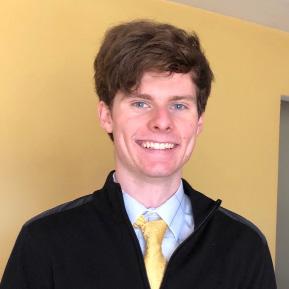
The topic is chaos theory, which I’ll describe in a little bit, and the example is pen dulum painting, which has recently become a popular art form on TikTok. Pen dulum painting has a pret ty self-explanatory name. You start with a blank can vas and hang a pendulum over it. This pendulum is a container of paint with a small hole; you let it swing, and the paint gradually falls onto the canvas as the string loops back and forth. The fnal product has a cool, almost Pollock-like quality to it.
These paintings are beautiful, but what fascinat ed me is that a pendulum is used. Many of you have likely studied or will study pendulums in a class. They are approximately harmon ic oscillators, meaning that
SUSTAINABILITY
However, our system in volves a change in mass as the paint falls out of the con tainer. It would be very dif fcult, even if we had infor mation about all the paint particles and the position and speed of the container at every point in time, to pre dict exactly what the fnal painting would look like on the frst try. In other words, even a slight change in the initial conditions—the type of paint used, the starting position of the pendulum, and the environment where you’re painting—could have a huge efect on the result ing painting. p; Mathematicians refer to these types of systems as “chaotic,” and seek to study them through the lens of “chaos theory.” The goal of this theory is to recognize patterns that will arise in such systems. The dynam ics may look vastly diferent at frst when the initial con ditions are slightly altered but eventually can fall into a common equilibrium. The mathematical name for this equilibrium is an “at tractor,” because it attracts many diferent starting conditions to the same end result.
Chaos theory plays a major role in modeling sys tems in the real world. An other chaotic system is the dynamics of three or more
objects in space—our solar system, for instance. We are lucky that this system has found a stable attractor. It’s also been shown that cha os can arise in population dynamics. Luckily for hu mans, we have had relative ly stable population growth throughout our history.
Less stable systems that exhibit chaos are, for exam ple, Earth’s climate and f nancial markets. In the frst case, meteorology relied on mathematical models to try and best predict the weath er. Models fail when infor mation is left out, which is why data collection is so im portant for meteorologists.
In the second case, cha os arises when an economic bubble occurs. It is difcult to identify bubbles when they frst appear, but per haps chaos theory could help do that in the future, although there is debate on whether this is the case.
Economists also use analy sis based on this theory to study business cycles and shocks to the market, such as the COVID-19 pandemic.
In all these cases, there’s always a gap between what we can know about the dy namics and what actually occurs. Despite this, cha os theory assures us that patterns are still possible, and very often do occur. So, we can still have beau tiful pendulum paintings! But we aren’t able to predict everything. In this case, or in many others, it’s artistic prowess and human inge nuity that melds chaos and beauty.
From meatatarian to vegetarian
ly sufcient because lots of people are immediately dis interested in anything else I need to say about being a vegetarian, but sometimes I fnd people who are actually really interested in learning more about a plant-based diet.
 BY KATIE BLOOMER ‘25
BY KATIE BLOOMER ‘25
As a child, my mom fondly referred to me as her little meatatarian. It’s not that I was a picky eater or that I hated vegetables. In fact, my favorite food was anchovies so I clearly ate nearly anything. Nev ertheless, most meals I ate consisted of a piece of meat with a side of vegetables and maybe some sort of carb. It seemed well-balanced and that was the standard type of meal my family was used to. In the minds of my par ents, protein meant meat so nearly every meal centered around this one particular category of food. This is all to say that although I am a vegetarian now, it is only a recent change in my life and I have been a meat eater for signifcantly longer than I have been a vegetarian.

Since becoming a vege tarian at the beginning of this year, I am constant ly asked why I made the change. My honest answer is because it is better for the environment, I don’t want to contribute to the killing of animals, and there are potential health benefts. This response can make some meat eaters unhappy, so I tend to mutter that I am really into sustainability and move on. This is usual
When I do decide to dive into the longer, more truth ful answer, I often get a fol low-up question about how reducing meat consumption can actually help the envi ronment. Basically, animals are bred by people specif cally for consumption and therefore are far more pop ulated than what would nat urally be occurring on the earth. Animals, especially cows, produce unwant ed greenhouse gasses, like methane. The overabun dance of cows means there are also excessive amounts of methane being released into the atmosphere. There are other issues regarding the land that animals use and how it would be able to feed more people growing plants rather than animals. This is due to the number of resources that are needed to raise animals. Livestock create over 14% of green house gas emissions across the world. Greenhouse gas es impact the infrared ra diation levels which warm the earth’s surface. This causes a variety of issues that are some of the most talked about problems in terms of the environment.
If you want to learn more, just look up the impacts of greenhouse gases.
Sometimes it feels like simply being a vegetarian can cause controversy.


I at tribute this partially to cog nitive dissonance, one of the



most interesting concepts I am learning in Health Psy chology this semester. Basi cally, cognitive dissonance is the discomfort felt when you hold two conficting beliefs or when your beliefs don’t match your actions. In this instance, most peo ple care about animals and don’t want them to die, but they still eat meat.
Judgemental vegetarians contribute to the problem by scaring people away from a plant-based diet rather than encouraging a partial change which would still make a positive impact. I will never pressure anyone into becoming a vegetarian because I totally understand that it isn’t for everyone. It wasn’t right for me for years and has only ft into my life style recently. I won’t rant on and on about the ways I am trying to be more sus tainable, but I also won’t be silent about my eforts. Maybe talking about my experience will encourage someone else to reduce their meat consumption or even become a vegetarian.
The hope that my ac tions will inspire others is the main reason I try to be sustainable. In reality, my individual changes aren’t enough to make a difer ence, but I can be the start of a ripple efect that does have meaningful impacts.
If you get one thing out of this article, I want you to know that even adapting a partially plant-based diet can make a huge impact. However, everyone has dif ferent things that work for them and you can still make sustainable changes without becoming a vegetarian.
Opinion | Arts and Culture
The horror movie of the year: Smile
on a hospital bed, smiling creepily. Then, it showed the name of the movie and the opening date of Septem ber 30. The vagueness of the trailer was immediately intriguing and immediately put this movie on my radar.
I’ve enjoyed in theaters in quite some time.
BY JULIA WIERZBICKI ‘23Let me start of by saying that the marketing for this movie has been 10/10 from the start. The frst teaser trailer had no words and only showed a man sitting
Then, in the weeks leading up to its release, they had a bunch of people at Mets games, smiling creepily and wearing “smile” shirts.
It did a great job of getting people talking about the movie and solidifed my need to see it in theaters.
Thankfully, Smile lived up to the hype and made it one of the frst horror movies
I feel like horror has tak en a major dip in quality over the years. There were a few hidden gems, like Hereditary or Us, but I’ve defnitely seen an increase in cheap jumpscares and backstory spin-ofs that re ally didn’t need them (I’m looking at you, Conjuring franchise). I was looking forward to seeing a spooky flm with a solid plot, an intriguing story, and some solid scares that didn’t just rely on loud noises and gore. And thankfully, Smile deliv ered. The story follows Dr.
Rose Cotter who, after wit

nessing the suicide of one of her patients, starts seeing the very same hallucina tions her patient described.
She quickly realizes that this is much bigger than just herself and starts a frantic search to discover what’s causing all this before she becomes the next victim.
The story seems very rem iniscent of The Ring, but in a way that I don’t mind.
The Ring also has a main character that gets a curse passed to her and has to fgure out what happens before she dies next. Smile was defnitely unique in a
lot of ways, which made it stand out and not feel like a repeat. The whole concept of people smiling being a bad omen is such a cool concept.
Taking a societal norm and turning it on its head makes the flm exponentially more creepy. Another great plus for the movie was the sound design; even in the trailers, I noticed the creepy sounds and music playing along, but this was amplifed in the theater. Although the concept alone was scary enough, the soundtrack added a whole other layer to it.
I will say, however, that
even though I enjoyed the flm, I don’t think it’s going to be a horror classic like Halloween or Scream. It did have some cheap jump scares thrown in and some questionable CGI at the end, and overall I do think the pacing was a bit of in the fnal act. But it’s defnitely a great popcorn flm and defnitely a perfect October flm. Overall, Smile is a fun, spooky movie that lives up to the hype of its market ing. Be warned, however: afterward you may never view a friendly smile from a stranger the same way ever again.
Ove, a grumpy yet love able man, fnds his soli tary world turned upside down when a friendly, loud, young family moves in next door. Ove is the kind of old man who points at people he dislikes as if they com mitted a crime and is ac cusing them. He has strict routines, rigid principles, and a short fuse. His whole neighborhood thinks he is a bitter old man, but there is a story and sadness be hind the cranky exterior.
One November morning, a new family moves in next door and accidentally fat tens Ove’s mailbox. The
family is a chatty, friend ly couple—Parvaneh and Patrick—with two chatty daughters, a seven-yearold and a three-year-old. The meeting of Ove and this new family will change Ove’s view on life, and change the neighborhood altogether.

To preface this review, this book contains the dis cussion of suicide, grief, and death.
People have a reason for acting the way they do, whether it’s their private struggles or personal cir cumstances. Backman does a great job illustrating this through Ove’s experienc es, but also some of the supporting characters like Parvaneh. Backman also doesn’t reveal the past right away. This gradual reveal parallels what it is like to meet and know someone in real life—when you meet, you don’t know much about them, and tend to make conclusions based on frst impressions. But people always have an experience
that has changed them as a person, whether for better or worse.
A Man Called Ove by Fredrik Backman BY STEPH SEARING ‘24
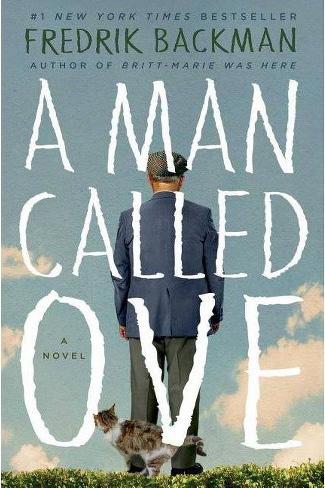
Additionally, this novel emanates the idea that an ‘unconventional’ family is still a family, and that you don’t have to be blood-re lated to be a family. The qualities that make people a family is caring for each other, being there, and sup porting each other. This novel ties that in with the idea that, sometimes, we are just destined to meet people. You can bond with the most unexpected peo ple and it just works; the more you bond the more you become a family. This theme throughout the novel made it feel like a big hug at certain points.
I really enjoyed the way this novel was written. It was written in the third person, but sometimes the narrator was talking direct ly to you, the reader, which drew me in a bit more and made the novel feel more engaging. The primary thing that blew me away
with Backman’s writing was the unbelievably good character development. Throughout the novel, you could see and feel how Ove was changing. You could feel how his present expe riences slowly changed him throughout the novel. It was shown so well through his actions that you just knew; it didn’t have to be stated. The character development was probably one of the best I’ve ever read.
Backman’s writing style is very elegant but very easy to understand and read, which is another reason why the book felt so engaging.
Overall this novel was very cute and wholesome. There are defnitely some triggering topics that are talked about but everything ends up okay.
Backman’s writing is phenomenal and I don’t think that the translation from Swedish took away from the story. I recommend this to anyone who is looking for a quick, hopeful, and wholesome read.
Opinion | Lifestyle
CLAIRE AND ETHAN...
Q: What do I do when I fail an exam?
BY CLAIRE HANNAN ‘24Almost everyone has or will fail an exam at some point in their college experi ence. Whether you’re taking a class outside your comfort zone or you had an of day in a subject you’re usually good
POEM
at, it’s ok. The frst thing to do is go over your exam and make sure you agree with all the corrections; graders and professors make mistakes when going through stacks of the same exam. If you fnd any grading mistakes that you want to challenge, you should go to your professor or TA’s ofce hours with a copy of your test and talk to them about getting some points back. Sometimes, no matter what you do, profes sors won’t give back points. In that case, you can ask for extra credit and most pro fessors will give suggestions on how to better prepare for future exams.
At the end of the day, the best thing to do after failing an exam is to forgive yourself and move on. You still have other assignments and opportunities ahead of you and you’ll help yourself more by focusing on the work to come rather than dwelling on something that you can’t change. Next time an exam rolls around that you feel less than prepared for, you can try reaching out to your classmates to plan a study session or try to start studying an extra day ear ly. Either way, don’t get too stressed out. It’s easy to get overwhelmed by a bad grade but you’ll be okay.
BY ETHAN KLESCHINSKY ‘24Well champ, welcome to the big leagues, as midterm season approaches you will begin to take your frst round of real college-level exams.
More likely than not, you are going to receive some grades
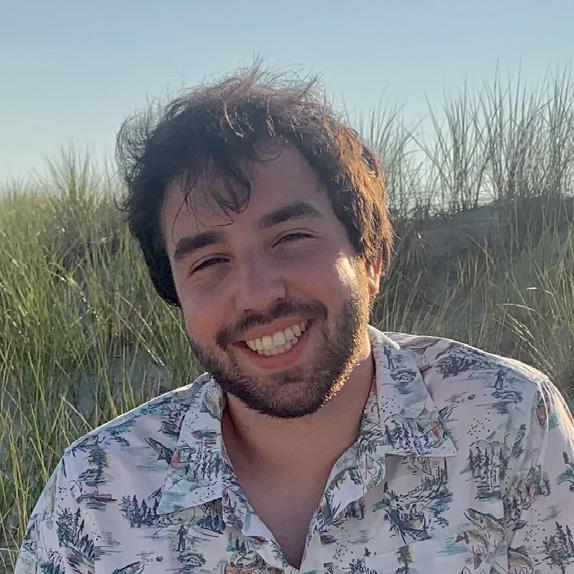


This Nap Dream with One Leg Gangrene
BY ASWIN AGUINAGA, NEWS EDITORIn winter I laid in a wa ter-colored dream Encircled by my own feet of epochal men Each pointing to what was left of my last good leg, A few toes touched by the cold of my gangrene.
I looked ahead, to their surprise, I only sighed. Without a qualm. However, I lie.
They see I’m ruined by ugly fesh Ready now to chop the relentless spread— Could they not see it makes me?
It has born the weight of all my mistakes.
And who to blame if I only
wanted to test my fates?
I don’t want to feel like a disgrace…
To depart with something that is so incredibly mine, A human part. Don’t you dare!
I escape into a wobble just to feel the last of this stretch, Some of my last few steps reminiscent of a little babe
Clueless to life’s choice-cut ting ways.
And in my retreat, I fnd some weird peace.
With both feet, I can see Mother Earth and Father Time Brother man and Sister mine.
I tell them, “I don’t want to feel defeat”
In one ending embrace Cry and brave.
Judaism and feminism: how far we have come, how far we need to go
ism.”
BY JORDYN RAMELLI ‘23I am proud to be a Jewish woman. I come from a long line of strong, Jewish wom en who have fought to keep our religion a sacred part of our livelihood. They inspire me every day to be a better version of myself. With this being said, since it is the Jewish New Year, I have de cided to conduct research on the impact women have had on the Jewish religion. I know there have been in equalities within my reli gion in the past, and I know powerful women before me have fought to change this.
Judaism has been con sidered to be a patriarchal religion, regarding wom en as having a lower status than men. For example,
women were discouraged from learning and studying the Torah. Rabbi Eliezer states, “‘If a man teaches his daughter Torah, it’s as if he’s teaching her foolish ness.’ What Rabbi Eliezer meant by foolishness is that women aren’t on the same intellectual level as men.” They were rarely allowed into the main study house to pray and learn—instead, they were given a subsidi ary option. In addition, the traditional role of Jewish women was to take care of the home, bear children, and obey their husbands.
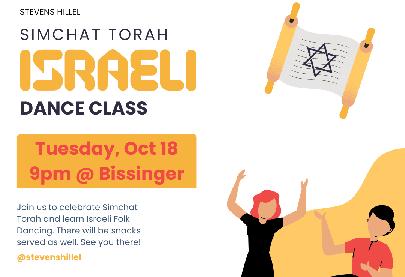
It’s important to note there are three major sec tors of the Jewish religion: Reform, Conservative, and Orthodox. A brief overview is stated by Mordecai Wax man, “Reform has asserted the right of interpretation but it rejected the authori ty of legal tradition. Ortho doxy has clung fast to the principle of authority, but has in our own and recent generations rejected the right to any but minor in terpretations. The Conser vative view is that both are necessary for a living Juda
The feminist movement took America by storm in the 1960s: Betty Friedan published her book The Feminine Mystique, Maria Goepper-Mayer was the frst American woman to win a Nobel Prize, and Lesley Gore’s hit song “You Don’t Own Me” took over the music charts. Individuals were standing tall for what is right, and the women of Judaism quickly followed suit. One of the frst major steps taken was allowing women to become rabbis; in 1972, Sally Priesand was the frst American woman to become a rabbi within the Reform movement. In 1983, Amy Eilberg was named the frst Conservative rabbi. Not until 2016 was Lila Kagedan named the frst Orthodox rabbi here in New Jersey, changing the course of his tory.
In addition, the for gotten prayers written by women are being integrated into Judaism, also known as techinot. As stated in “Feminism and Judaism,” published by Harvard Uni versity, “Reclaiming as
pects of traditional Judaism which relate to the female experience, many have be gun to introduce new rit uals and perspectives into the Jewish canon. Jewish history is being rewritten to include women’s experienc es, as in the unique prayers for women called techinot. In a modern version of Mi drash, Jewish texts are be ing reinterpreted to uncover the woman’s point of view.”
In my opinion, techinot are some of the most beautiful prayers within the Jewish religion. New prayers have also been composed to high light women’s experiences in Judaism, such as a vol ume created by Marcia Falk.
With this all being said, I truly love my religion and I admire the progress that has been made and is still being made today. Jewish women are strong, power ful, and brave for the work they have done to reach equality within our religion. While we still have work to do, Judaism has taken large steps to combat inequality and embrace the ideas, be liefs, and prayers of Jewish women.
that make you a little upset.
Long gone are the days of free A’s in Ms. Smith’s U.S. History class. This is a collegiate insti tution created for the sole pur pose of breaking your spirit.
When you don’t get the grades that you’re hoping for, there are two ways to deal with your problem. The best course of action after failing an exam is to go to your professor’s ofce hours and beg for undeserved points. The diference between a good Stevens Engineer and a great Stevens Engineer is the amount of boot-licking that is involved in their curriculum.
By working through problems with your professor you may fnd that the TA that graded
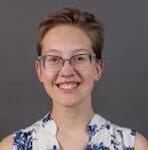
your work did not give you any partial credit which gives you a chance to bounce up a letter grade. Or if you’re really lucky your professor will feel bad for you over your frst failing grade and sprinkle on some sympa thy points. After being hum bled by your professor and not being granted any extra points there is only one way to deal with your problem… drop out. Dropping a class is not the end of the world and if you are in a class that has three exams worth 25% of your grade each, it is probably in your best in terest to not waste your time. If you failed the frst exam, you’re probably going to fail the second.
ALL’S WELL THAT ENDS WELL In time’s hands
BY LAUREN GARRETT ‘25Gather ye rosebuds while ye may, Old Time is still a-flying; And this same flower that smiles today Tomorrow will be dying.
The glorious lamp of heaven, the sun, The higher he’s a-getting, The sooner will his race be run, And nearer he’s to setting.
That age is best which is the first, When youth and blood are warmer; But being spent, the worse, and worst Times still succeed the former. Then be not coy, but use your time, And while ye may, go marry; For having lost but once your prime, You may forever tarry.
Robert Herrick – “To the Virgins, To Make Much of Time”
Our lives are ruled by two hands on a face. Some say it’s a constant countdown, while oth ers claim it’s simply a way to organize life as we know it. Neverthe less, time spins the Earth on its axis. Alarm clocks scream at us to wake up. Timers count down to assignments due at 11:59 p.m. Stopwatches with a 0.001 second precision determine if we make it to the state meet. Notifica tions from laundry apps loudly announce, after 54 minutes, that our laundry is ready to be folded and put away. Grandfather clocks at our grandpar ent’s house strike a deep, reverberating melody as the minute hand hits the top of the hour. Every time we open our phones, there it is, the three to four numbers that run ev eryone’s day-to-day life.
Wake up to schedules, deadlines, meetings, as signments, countdowns, then eat, sleep, and re peat. Seconds tick by. You are five years old learn
ing to tie your shoes. A minute passes. You are 11 years old playing in your first tackle football game. 30 seconds slide by. You are 14 years old in the car on the way to your first homecoming dance. Tick, tick, tick… You are walk ing at graduation, high school diploma in hand and a huge smile on your face. Then, in just the blink of an eye, you are studying late at night for your molecular biology exam scheduled for 0800 the coming morning in October of your sopho more year of college.
The clock doesn’t stop. If anything, time seems to go faster and faster as we age. Have you ever no ticed that? When we were children, days never end ed. Summers didn’t go by in the blink of an eye, as they were jam-packed with excitement and ad ventures and imagina tion. Now, every day goes by so quickly. Someone close to me reminded me recently that I’m almost 20 years old, and if, God willing, I live to 100, that means that I am already 1/5th of the way through my life. One out of every five days that we are alive has already been lived. And, perhaps the most somber thought of all is that we can’t just get them back. People keep telling me to live in the moment or not to take so many pictures, as I won’t be able to enjoy life if I’m always looking through a camera lens. I couldn’t possibly disagree more.
Years ago, while my great-grandmother was in hospice with demen tia ravaging her mind, I pulled up a few pictures from a time when I was a little girl and she came to visit me. Immediate ly, she remembered sto ries that even I couldn’t recall from that visit.
I have been taking pic tures and videos of those close to me for years, and, even if they are no longer in my life, they remain.
They act like digital dia ries. Those pictures hold memories filled with happiness, pain, sadness, anger, etc. that one day I may forget unless I have a visual reminder. Those videos hold voices or sounds of laughter that I may never hear again in person. So, sure, live in the moment, but don’t forget the importance of having something to look back on. And, please, pick the rosebuds while you may, as time doesn’t stop moving.
